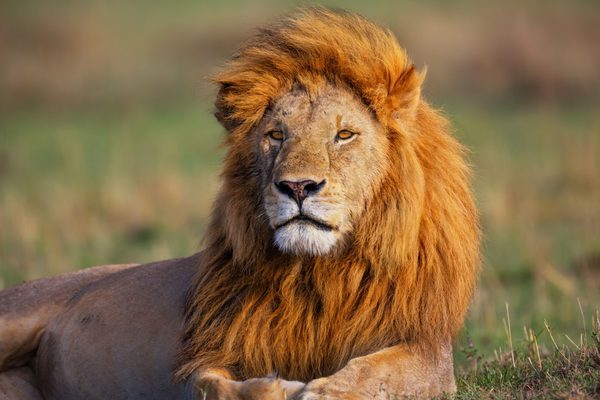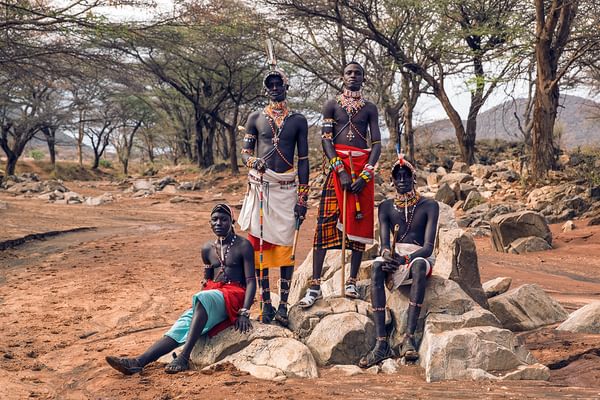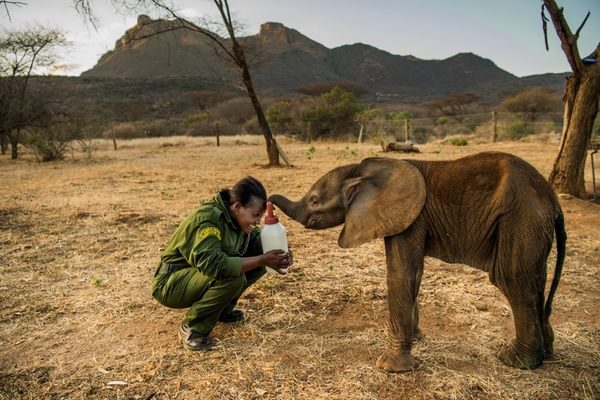More Blogs On Kenya

Ben


Can't decide where to go? Why not peruse some of our most popular destinations for inspiration then give us a call!

A diverse land brimming with superb safaris, pristine sandy beaches, towering snow-capped peaks and tropical underwater worlds is just waiting to welcome you

Australia offers vibrant cities, diverse landscapes, and iconic wonders like the Great Barrier Reef. New Zealand adds dramatic scenery, Maori culture, and relaxed charm. Together, they promise nature, adventure, culture, and warm hospitality.

If you're dreaming of an island getaway, look no further than the Caribbean with its gorgeous soft sand beaches and lively, diverse cultures.

Head to the amazing destination that is Central America, full of the knowledge of ancient civilizations, incredible mountains, and beautiful beaches.

Discover vibrant cultures, pristine beaches, and tantalizing flavours in the captivating travel haven that is East and Southeast Asia

Embark on a journey through the vibrant tapestry of India, Sri Lanka, and Bhutan—where ancient temples, lush tea plantations, and soaring Himalayan peaks promise unforgettable moments at every turn.

Picture yourself basking on sun-kissed beaches, sipping tropical cocktails beneath swaying palms —where crystal-clear lagoons and luxurious resorts cater to your every desire.

Experience world-class hospitality, mouthwatering cuisines, and the region’s deep-rooted cultural traditions for an unforgettable Middle East adventure.

Venture to the ends of the Earth and behold the icy majesty of polar landscapes. Discover pristine solitude, exhilarating expeditions, and breathtaking views that promise a memorable encounter with nature at its most dramatic

Journey into the heart of South America, where the rhythmic pulse of its vibrant cities meets the majesty of the Amazon rainforest and the timeless wonder of ancient civilizations.

The South Pacific is a paradise of turquoise waters, white-sand beaches, and vibrant island cultures. From adventure and natural beauty to pure relaxation, each island offers its own unique charm and welcome.

From the soaring plains of the Southwestern USA to the stunning landscapes of the expanses of Canada, visit some of the most impressive scenery in the world

If you are looking for a trip to knock iconic locations off your bucket list, check out our buck list recommendations

From the graceful stride of giraffes at sunrise to the echoing roars of lions beneath starlit skies, each of our safaris promises an unforgettable dance with nature.


Our family holidays are a perfect opportunity to create lasting memories, whether exploring new destinations or simply enjoying quality time together. From adventure-filled escapes to relaxing beach retreats, they offer a chance to reconnect and unwind away from daily routines.

Our luxury holidays offer the finest experiences, from exclusive resorts and private villas to tailor-made adventures with impeccable service.

For those seeking adventure beyond the usual tourist trails, our off-the-beaten-track trips take you to some of the world’s most remote and untouched destinations, where authentic cultural encounters and breathtaking landscapes await. Let us craft your unique journeys that few travellers ever experience.

For the ultimate beach escape, we offer luxury holidays to some of the world’s most stunning coastal destinations, from the white-sand shores of Antigua to the turquoise waters of Zanzibar.

For those who crave excitement and exploration, our adventure holidays take you to some of the world’s most thrilling destinations, whether trekking through Patagonia, summiting Mount Kenya, or kayaking past icebergs in Antarctica.

Interested in something a bit more focused? How about a horse-riding holiday through Argentina? Or a photography safari? Look through our Special Interest holiday selection for inspiration

Our wildlife holidays invite you to step into unique ecosystems and experience amazing animal encounters. Whether spotting majestic tigers in the jungles of India or marvelling at polar bears in the Arctic, each trip promises awe-inspiring moments steeped in the magic of nature.

Our small group tours offer the perfect balance of expert-guided exploration and personal experience, taking you to incredible destinations with like-minded travellers. Whether it's a wildlife safari in Botswana, a cultural journey through Vietnam, or a chef-led expedition through India, our carefully curated itineraries ensure an intimate, enriching, and hassle-free experience.

Sustainability travel is at the core of what we do and a guiding principle in every choice we make as a business. Let us help you make sustainable travel choices

Read about what we do to make a difference

One of the most important parts of our commitment to responsible travel is protecting our clients, and it is a part that we take extremely seriously.

Not sure what's best for which time of year? Check out our expert-written guides

Looking for some expertise on your destination? Have a look through our selection of guides and articles written by our destination experts

Looking for more inspiration? Read from our range of hundreds of articles from our travel specialists, local guides, and personal travel tales.

Our mission is to make every holiday special. We will do this whilst specifically aiming to minimise the environmental impact of our activity and maximise our opportunity to influence others to do the same.
Experience the cutting edge of African conservation.
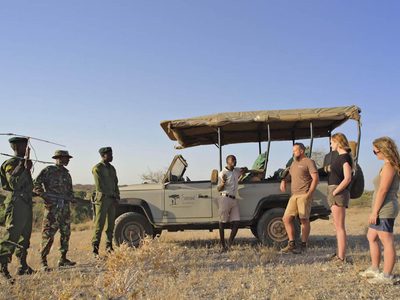
This is a safari that has no comparison in the whole of East Africa. A unique experience at the cutting edge of African conservation located in Kenya. When Saruni was offered by Northern Rangelands Trust (NRT) and Sera Community Conservancy to run this project, we all felt that it was a defining moment for us as a company dedicated to the protection of land and wildlife for the future generations. A couple of years later, its success is setting a new benchmark in community and wildlife management. And guests regularly call it the highlight of their African safari.
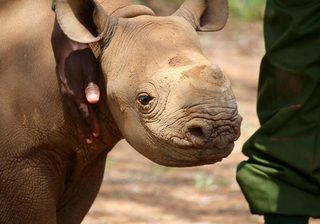
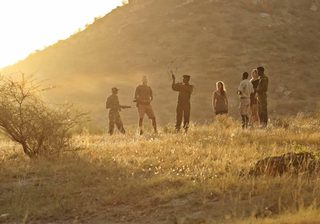
To track and find on foot black rhinos – one of the most endangered species on the planet – with the help of Samburu rangers and Samburu warriors in one of the most isolated and most beautiful un-spoilt areas of Africa, is truly a privilege that it is impossible to forget. For many of our guests, it is a life changing moment, not just the chapter of a holiday in Africa but a transformational one in a magical, remote paradise.
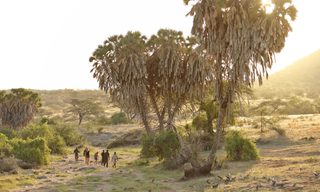
Our guests stay at Saruni Rhino, a small but remarkable lodge located in the 350,000 hectares Sera Community Conservancy, in the wild, undiscovered Northern frontier of Kenya. It’s Africa as it was, the magical Africa of the dreams of pure nature with very little human presence and intervention. Saruni Rhino offers the first rhino tracking experience in East Africa: an amazing walking safari that provides a uniquely thrilling adventure, but also allows our guests to actively contribute to the protection of this iconic species. Herds of elephants populate this vast landscape, and guests can also enjoy amazing birdwatching and cultural experiences at the ‘singing wells’.
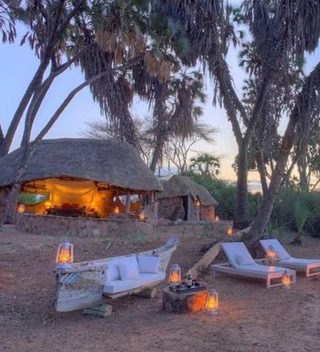
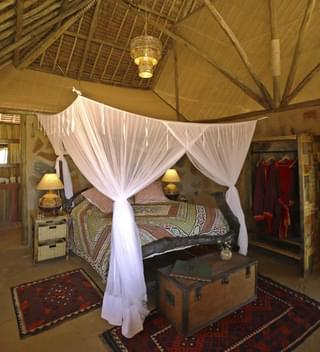
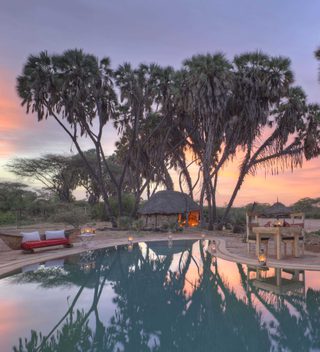
The reasons why this experience is unique are many: it is the first community conservancy in Africa to own and operate a sanctuary dedicated to the conservation of the critically endangered black rhino; it is the first time the black rhino is back in Northern Kenya 30 years after they were poached and eradicated from this territory; it is the first time a black rhino tracking experience has been available in Kenya, and it is done with Samburu guides who share their local, authentic insight and culture; and finally it's a perfect oasis amidst the arid rangelands of the north, amongst doum palms dotted along a dry river bed.
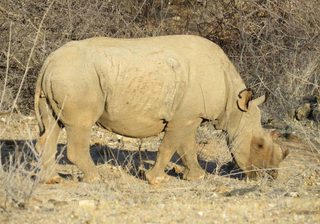

This community-based project works. In a time and era when rhino news is often negative – loss of rhinos, loss of territory, loss of hope – the Samburu of Northern Kenya are showing that things can be different. Since the initial rhinos were relocated into Sera Conservancy, there have been four births. Following your ‘up close and personal’ encounters with ‘the supreme rhino of Sera’, the conservancy provides further plentiful wildlife opportunities and experiences, including game drives to spot the Samburu specials (oryx, gerenuk, ostrich, Grevy’s Zebra, reticulated giraffe), buffalo, elephants, antelope and a plethora of birdlife.
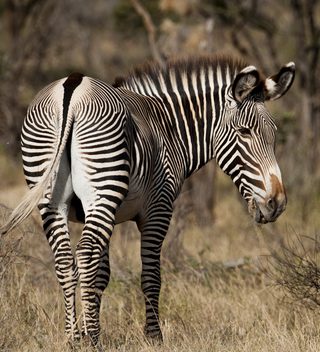
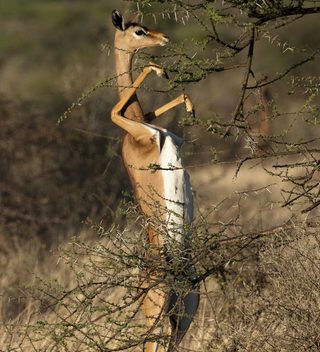
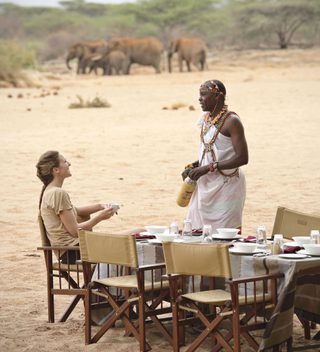
Sera is also home to The Fifty Wells, ‘Kisima Hamsini’, a series of (50!) springs where local pastoralists take their livestock to drink, digging up water from the wells to fill up holders and troughs. The Singing Wells represent one of the most authentic cultural experiences available today in Africa. It is a rare treat to see the local community singing proprietary songs recognisable only by their own cattle, to encourage them to come to the wells to drink. A Biblical scene, as many of our guests describe it. There is no photography, there is no interference, there is no commercial transaction: it is an ancient, nomadic Africa that is as heart-beating as the rhino tracking.
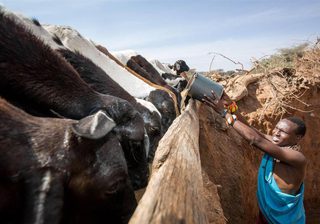
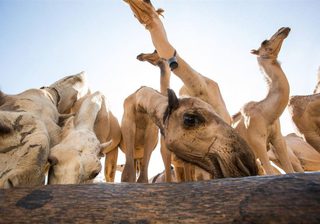
From Saruni Rhino we also visit the recently opened Reteti Elephant Sanctuary in Namunyak Wildlife Conservancy located in the remote Mathews Range nearby. It provides protection for orphaned and abandoned elephant calves with an aim to release them back into the wild herds adjoining the Sanctuary. Another community-run project that allows us to be very close to baby elephants in their natural environment.
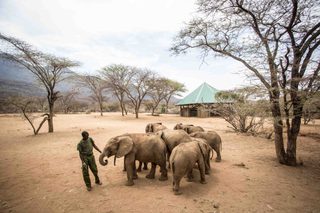
When you join us on this adventure, you become one of us, a conservationist actively involved in saving the rhinos. We look forward to have you among our ranks.
If you'd like to see rhinos on your holiday, check out where to see rhinos in Africa.
For more holiday inspiration, take a look at our 26 favourite safari holidays, our best African honeymoon ideas or our top family safari holidays.


What can I say….my son and myself had the most wonderful time in Kenya thanks to the first-class itinerary that Ben and Louise put together for us. We spoke with Ben many times to ensure he ‘got it right’. This was our 2nd visit to Kenya, and it certainly lived up to our expectations and memories. Nothing was too much trouble for all the staff; we cannot have been looked after any better. I would highly recommend Far and Wild; they are so knowledgeable and have personally visited the lodges and areas. We are already planning another visit, and we cannot wait.
I have just returned from the most amazing trip to Tanzania, booked with Far & Wild. Everything went so smoothly from the first time I spoke with them. The planning was great, the itinerary was perfect for us, and the lodges were amazing. We spent 10 nights with an amazing guide, travelling through Northern Tanzania and even got to see the migration, which was a lifetime ambition of mine. This wasn't our first safari, so we were nervous as to how it would compare, but it was spot on. I will certainly be using them again to book our next trip....we're thinking of a relaxing beach stay next time to get over the excitement of safari!
Just back from another amazing F&W organised trip to Namibia with the family (8 adults). Having been there before, Alistair tailored our trip to include our favourite locations and added a new one for us, which we loved.The quality of accommodation and guiding, activities, food and drinks was exceptional throughout. It was good value for the level of luxury we had.
We had a wonderful trip to São Tomé and Príncipe - a small island nation in the Gulf of Guinea with paradise (almost empty) beaches and jungle forest. It was all well organised by Far and Wild and we stayed at a great combination of different types of resorts/hotels. We really recommend this for those who want to experience a pristine destination with few other tourists and friendly and welcoming people. The islands also feel very safe. At Principe, there are no dangerous animals, snakes or whatever, and it was great to be able to hike in the jungle without being very conscious of where to put your hands and feet. Go before everyone else does!
Back home again, basking in the joys of a superb safari. Every aspect you arranged for us, including linking up with Mack Air and Wild Horizons locally to transport us. The choice of camps was ideally situated, comfortable, in good surroundings, and with excellent wildlife on the doorstep and throughout the wider country. The service staff in each looked after us very well, catering was excellent, and the game guides were professional, knowledgeable and helpful. You made us happy, and we recommend you to similar safari enthusiasts with confidence.
Far and Wild went above and beyond to make sure my trip to Zambia was special. I would definitely recommend them and their services to anyone wanting to travel to Africa.
Lovely holiday at the amazing Almanara on Galu beach, a beach like no other. Far and Wild excelled themselves from beginning to end of our holiday in beautiful Kenya.... What a country!,
Wow! These guys are amazing. Can’t recommend them highly enough. Friendly AND efficient! Sorted out our trip (last minute and lots of different family member needs, sorry!) in record time and everything worked like clockwork. Trip of a lifetime to the Masai Mara. Will be back (and use F&W again!)!
It was a dreamy holiday on the Kenyan Coast - Far and Wild, their efficiency and professionalism allowed us to relax and be the happiest family alive !! We cannot fault them, their care and understanding of what we wanted from a holiday ensured we had the most memorable trip. We will be booking with them again for sure!
Get travel tips directly to your inbox every week
Give us a call on 0203 111 1315 or fill in the form below and we’ll be in touch.


